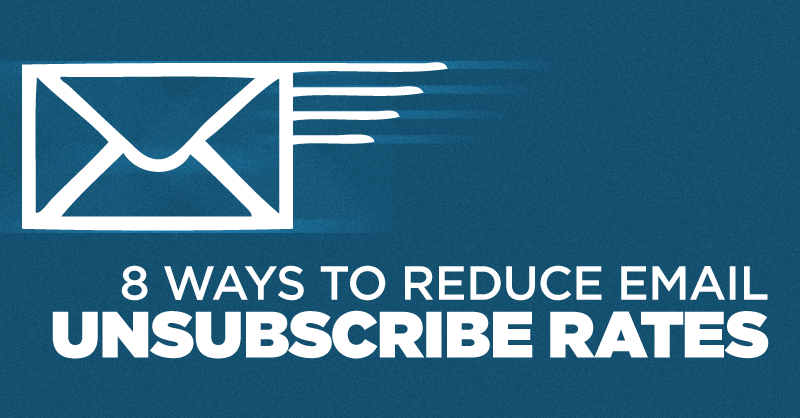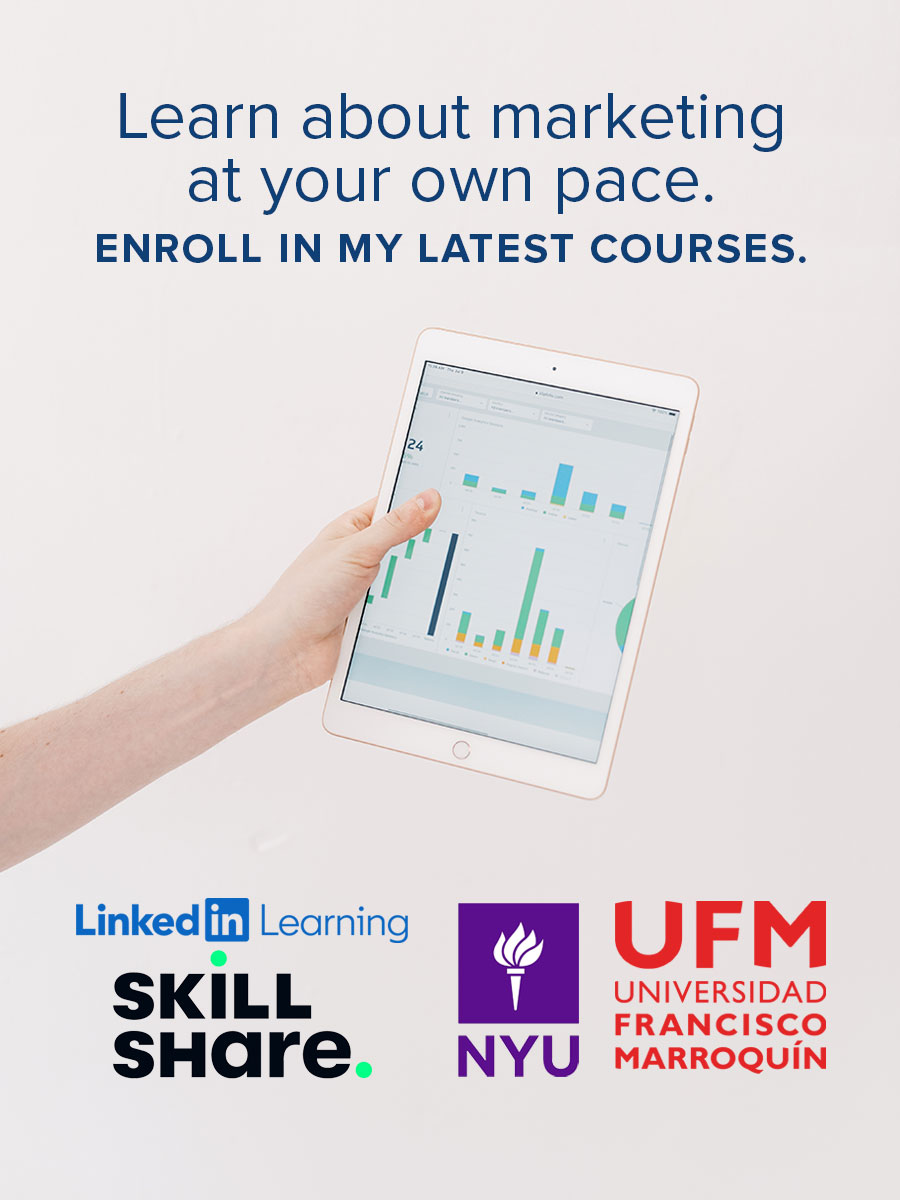
This article was originally published on the Jumplead Blog.
Having a strong email list is one of the most effective methods of reaching potential customers online. According to Convince and Convert, 44% of email recipients made at least one purchase last year based on a promotional email. One of the main reasons why emails are effective is that users choose to subscribe to your list and have the option of unsubscribing to your list at anytime. It is crucial to monitor the rate of unsubscribes from your email list to understand what is and isn’t resonating with your audience, as well as if you are losing valuable customers.
What is a reasonable unsubscribe rate? If your list receives less than a 2% unsubscribe rate than that is typical for most industries. If your unsubscribe rate is higher, than it is time to rethink your email strategy.
Here are eight ways to minimize your unsubscribe rate and bolster your email marketing:
1. Supply original, quality content to your list.
Sharing quality content is an effective means of bringing value and trust to your audience. The emails sent to your list should serve a variety of purposes, one of which should be sharing content about your business, your service offerings, the industry or any relevant news or trends.
Bombarding your email list with sales and product offerings is not the way to keep your unsubscribe rate low and is quite frankly annoying. Vary the types of emails being sent to your list to ensure content from your business resonates with the different segments of your audience.
Become a trusted source of information on a topic overtime and subscribers will become accustomed to regular content from your business that is fun, informative, unique, educational or outstanding.
What type of content should a business send in their emails? Depending on your industry, it should be a variety of the following:
- Blog posts
- Contests
- Photos
- Videos
- Animated GIFs
- Podcasts
- Presentations
- Cartoons
- Event Info
- User generated content
- Memes
- Infographics
- Interviews
2. Experiment with frequency, do not over do it.
Set up a calendar to manage how frequently your business will be sending emails to your list. This is one of the most important aspects of your email strategy because it can have a tremendous effect on your open rates and unsubscribe rate. An email open rate determines how many people on an email list open a particular email, which is often impacted by when they receive it.
Also, the unsubscribe rate is affected by the frequency of your email because if a list is receiving too many emails from a business they may become irritated and possibly unsubscribe. Experiment by sending emails at different times during the day to see what works with your audience, also test the unsubscribe and open rates for different days of the week and weekend. Once your business has established how many emails to send and at what frequency, set up a calendar to ensure consistency with your email outreach.
The best time and frequency to avoid losing email subscribers varies by industry but here are some general statistics to note on the best times to send your email according to this GetResponse infographic.
- 23.63% of all email opens occur within 1st hour after delivery.
- Top clicks on email by hours are: 8:00AM, 9:00AM, 3:00PM and 8:00PM.
- Top open rates on email by hour are: 8:00AM, 9:00AM, 3:00PM and 4:00PM.
- Messages sent in the early afternoon have a better chance of being noticed with up to 10.61% open ratio and up to 2.38% CTR.
3. Segment your lists intelligently.
Segmenting an email list entails separating the subscribers into different groups based on their interests, location, company size, age, gender, education level, geography, job position, industry, purchase history or other distinctions.
By segmenting your email list accurately, the messaging sent to each customer is more personalized with the right context and is less likely to be irrelevant to their needs and interests. Assuring that emails sent to your customers provide the correct context is the difference between making a sale and losing subscribers from your list.
To segment your list, use a reputable email management platform and utilize its list segmentation options. Start segmenting by geography and purchase history to have the most impact on the effectiveness of your list. Customize your emails to two different segments, start small and work towards creating unique campaigns for many different segmentations to make the most of your list.
4. Survey unsubscribers for feedback.
When someone unsubscribes it is your last opportunity to speak with him or her directly, unless they subscribe again in the future. Set up a survey for when people do unsubscribe to poll them on why they decided to leave your list. The insights this information can offer could help prevent unsubscribes in the future. The ability to conduct a short survey is an option that most email platforms provide and it should certainly be utilized.

It is essential that the survey is kept short, like this one above from MailChimp; to avoid further irritating customers while also trying to learn from each unsubscribe. Ask questions like “Did you find these emails valuable?” to ascertain actionable insights from the feedback you receive to alter and impact your email marketing strategy. If respondents answered that sample question and said they didn’t get value from your emails, then revisit your approach to email content. These types of insights are an invaluable way to reduce your unsubscribe rate.
5. Consider message format choices.
Offering your email messages in HTML and plain text is important to give a variety of options to users using different email clients, browsers and mobile devices. Plain text emails are simple emails with no customization or formatting, while HTML formatted emails offer rich-text formatting that allows for different visual components.
It is frustrating to receive an email that is broken or can’t be viewed in some way, hence why offering both options helps ensure everyone receives your messages. Not offering multiple format options for your email could affect your unsubscribe rate substantially.
6. Offer exclusive sales, offers, discounts or info.
Many people unsubscribe from email lists when they don’t find value from the emails they are receiving. To help ensure your company’s emails drive value to customers, offer exclusive access to contests, sales, offers, discounts and promotions. When the emails your customers receive become their source for all your latest sales and original offers, then it becomes more difficult to unsubscribe from your messaging.

Online fashion retailer Nasty Gal often sends exclusive sales to their list to incite traffic to their website and buzz about their latest product offerings. The company uses visual content and GIFs to make these email specific sales more exciting. Look to this as a strong reference on how to best utilize exclusive offers and reduce unsubscribes from your list.
7. Utilize an unsubscribe confirmation email.
To help combat accidental unsubscribes from an email list, which happen occasionally, set up an email auto responder to ensure that this was not an accidental unsubscribe. This email allows a customer to easily re-subscribe to your list and correct the accidental click of the unsubscribe button.

8. Simple and engaging subject lines.
The subject line is another really important aspect of email marketing that has a strong effect on your unsubscribe rate. Crafting the right message for your subject line is a difficult task, since it is a vital step to getting someone to open your email.
Keep it short and simple by limiting your subject line to 28-39 characters for the highest click rates. Set the expectations for the email’s content right away for your subscribers to illustrate what is inside the email. To help draw emphasis, don’t be afraid to use all caps on an occasional word, the word ‘free’ or an exclamation point. Frame your subject line as a question by targeting the types of problems your customers or leads need answers for. Leverage localization in your subject line because once again, a strong context often results in stronger actions like an open of the email, click on a link or sale on your website.

The subject line is also affected by other factors as well, regardless of how it is crafted. The from field as well as the short preview both have a measurable impact on whether a user decides to take an action with that particular email Ultimately, be useful and ultra-specific with your subject lines, stand out visually with the use of brackets or uncommon capitalizations, use timely topics to your audience, include a strong call to action and constantly test different subject lines to see which are the most effective with your list.
The MailChimp team said it best: “When it comes to email marketing, the best subject lines tell what’s inside, and the worst subject lines sell what’s inside.”
What do you think? What strategies have worked to reduce your unsubscribe rate? Share your comments and questions in the comments below.
Images courtesy of Alex West Gate & Newsletter Monitor.


